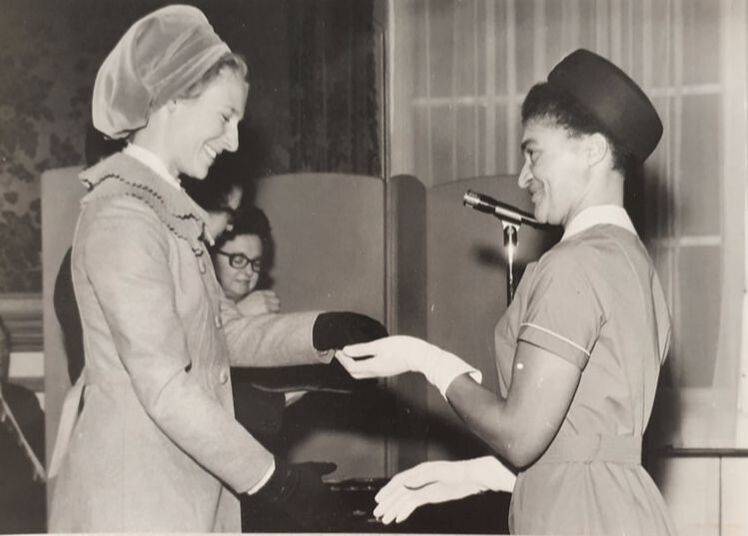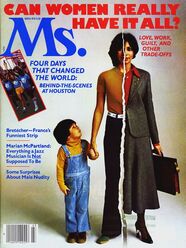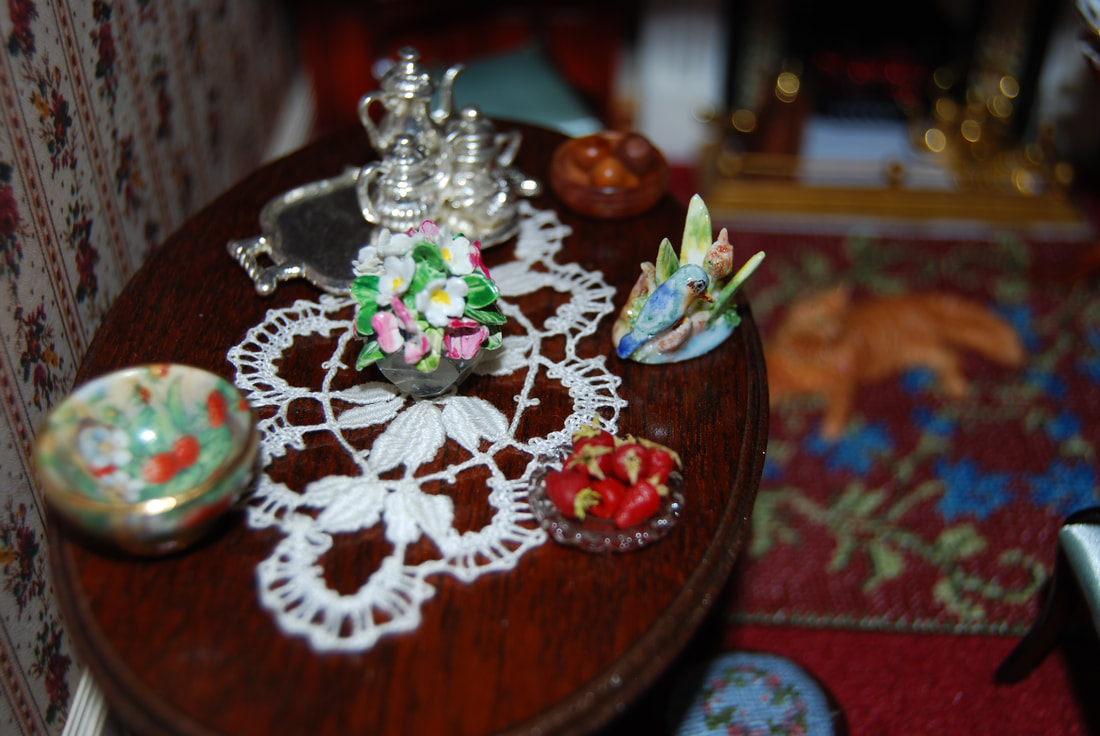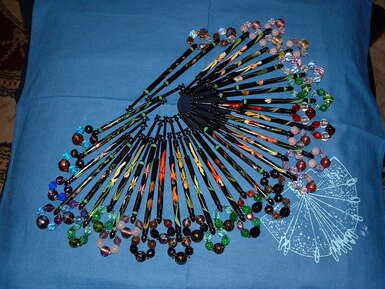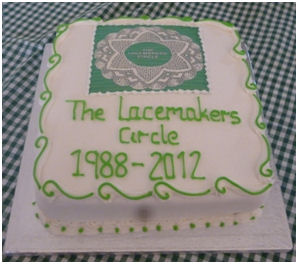So, why did Adult Education craft classes collapse in the 90s? Two key things happened in the UK. Firstly, in order to teach at an evening class, you had to have a tertiary teaching qualification. Secondly, funding was limited at this point and many 'non essential' classes suffered. Don't get me wrong. Having a recognised standard of teaching is important. However, this was badly handled by the local authorities with many teachers being told during the summer holidays that they would need to be qualified by the start of the new term in September.
The groups that started in the late 80s and early 90s offered lacemakers a place to meet and more importantly, lace days where people could come from different groups, meet, make lace together and have access to multiple suppliers. Lace fairs were a regular fixture in our calendars. June was the Bromley Lace Fair, September we all went to Rugby for the Springett Fair and Christmas was a trip to the NEC. The first time I went to the Springett Fair in 1988, the whole of the back wall of the sports hall was filled with the teachers from the British College of Lace. With a lack of teachers for lacemaking at the evening classes, the limited funding was often prioritised to courses where the markets dictated - those leading to qualifications such as languages or social classes such as cooking, which were always over subscribed following the new TV trend of cookery programmes feature Delia, Keith Flloyd or Gary Rhodes and the launch of Breakfast TV in 1983, with resident chefs told people that cooking food was accessible for all. Single term classes allowed enough commitment (13 weeks) to learn a new skill without having to agree to 2 or 3 year commitment of a qualification such as City & Guilds. City & Guilds offered a lacemaking qualification starting in 1987 and was launched at Knuston Hall. The qualification was taught at local colleges for over 20 years, however the biggest barrier to most lacemakers was the time needed to take the qualification. I remember inquiring about it when it was first organised and realising that it would cost me more than I could afford in both time and funding. Effectively, the course needed a full time commitment and as I was working, I couldn't complete the units in the timescales needed. The cost per year, for two years, was the equivalent of 3 months wages for me, something which I just couldn't afford.
We must not limit ourselves to just one demographic - we have to make lacemaking accessible to everyone regardless of age or social background. I accept students from the age of 8 upwards, but have been happy to teach young as 6 where they have an aptitude. Lacemaking has gone through its ups and downs in the UK. From the decline when lacemakers moved into industrial centres to make more money, the women of Bedford, who left lacemaking to plait straw for hats, the lacemakers of Devon, who petitioned Queen Victoria for help, decline through World War II and it's ups in the 1980s to downs in the late 90s, what next for lacemaking? The lockdowns may just have helped to bring lacemaking out of the it's doldrums this time.
People have turned to craft as a way to express themselves and online sharing and learning has become a way for people to support each other as they develop their skills. In July 2020, Beginner Bobbin Lace Makers was created by one person as a peer to peer group to support lacemakers. They support each other through regular zoom meet ups, answer questions online and help each other through messenger. As of May 2021 this group has over 1.7k members, worldwide. Think about that. 1.7k members who regularly talk to each other. Probably the saving grace for lacemaking in the UK is the fact that whilst people join the Guilds and Societies, the individual groups are not affiliated with any governing body. The recent demise of the Embroiderers Guild and the local groups were all tied up to it shutting has taught us all a big lesson. Just as evening classes in the 70s and 80s opened up educational opportunities for women in the UK, online communities are opening up lacemaking to people who would not have access through traditional classes, worldwide. I think that the next evolution of lacemaking has begun and it's happening online.
1 Comment
Lyn Bailey
4/5/2021 11:40:40 pm
I think the pandemic has had a silver lining in lacemaking. Online classes and meetings are exploding all over. I highly doubt that the demise of in person classes and meetings will come any time soon, but online classes are filling a void. There are several drawbacks to making bobbin lace. It is very time consuming for the product you get. This means that most people making lace must fit it in with raising children and holding down a job, or both. You can't put it in your pocket or a bag and take it with you as you can knitting, for example. In the US, which does not have the industrial lace history, with great aunts and grandmothers having been lacemakers, exposure to lacemaking in public is limited. The internet had gone a long way to take care of that. Classes can be expensive, especially if you factor in lodging costs, and travel, which in the US can involve airfares. Zoom classes reduce the overall price considerably, as you are in your own home at the time, therefore no lodging expense and no travel. Bobbin lacemaking is not for everyone, but with the advent of the internet, exposure to bobbin lace and the people who make it, as well as the ease of finding an online teacher, must increase its popularity.
Reply
Leave a Reply. |
From time to time I post on different groups and wanted to collect some of the advice that I give in one places.
Categories
All
Archives
November 2022
|


